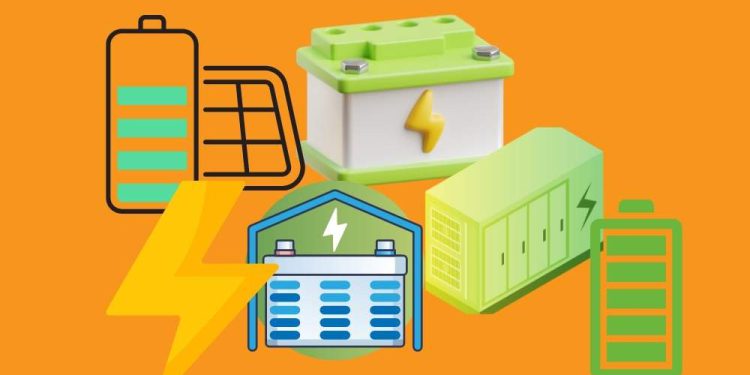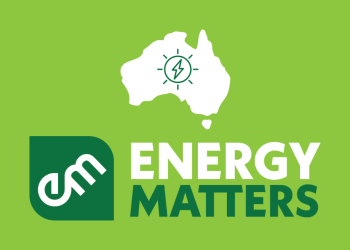When homeowners think about adding a battery to their solar system, the first questions are often about cost and savings. Yet the choice between lithium-ion and flow batteries involves more than payback periods. Safety in the home is just as important.
Lithium-ion batteries are the most widely used option, known for compact size and high efficiency, but they come with a risk of overheating and fire if systems are poorly installed or damaged. This risk is small but real, and in today’s hot climate, it can’t be ignored. On the other hand, flow batteries are bulkier and less common but use liquid electrolytes that are non-flammable, making them a safer option for households worried about fire hazards.
For families, the decision is not just about cutting bills. It’s about choosing the technology that keeps the home secure, passes insurance requirements, and provides confidence during long summers and storm seasons. Understanding the safety trade-offs between these two battery types can help households make a choice that delivers both independence and peace of mind.
Lithium-ion: Compact power with fire risks
Lithium-ion batteries dominate the home energy storage market in Australia. They are compact, efficient, and widely available. For suburban homes with limited space, they fit neatly into a garage or wall-mounted system, offering reliable storage without requiring major changes to the property. Costs have also fallen, making them the most affordable and accessible option for households looking to add storage quickly.
The drawback lies in how the chemistry behaves under stress. Lithium-ion cells store energy densely, and if damaged or poorly managed, they can enter a state known as thermal runaway. This means the battery overheats, which, in rare cases, can lead to fire. Australia’s climate makes this risk worth considering: prolonged heat waves, bushfire zones, and high summer temperatures place extra stress on storage systems, particularly when installed in enclosed or unventilated spaces.
Most safety incidents are linked to poor-quality products or uncertified installation rather than the technology itself. That is why Clean Energy Council (CEC) approval and accredited installers are essential. Homeowners choosing lithium-ion should insist on reputable brands, proven safety features such as battery management systems, and installation that meets strict Australian standards. When these steps are followed, lithium-ion remains a safe, practical option, but one that still carries a small degree of risk households must factor into their decision.
Flow batteries: Bulkier but built for stability
Flow batteries operate on a very different principle from lithium-ion. Instead of storing energy in solid cells, they use tanks of liquid electrolyte that circulate through the system when charging and discharging. This design makes them non-flammable, removing the risk of thermal runaway that can concern homeowners with lithium-ion. For families focused on safety, this stability is one of the strongest advantages.
The trade-off is size. Flow batteries are larger and harder to integrate into tight suburban homes, where space is already limited. They are better suited to rural properties, homes with land, or off-grid setups where storage can be housed in a shed or separate structure. Installation costs are higher, and the upfront investment is significant, but the lifespan can stretch well beyond 20 years with minimal capacity loss, giving them a long-term edge.
Flow batteries also handle deep discharges better. Where lithium-ion systems can degrade when regularly used at full capacity, flow batteries are built for frequent cycling. This makes them a good option for households wanting a safe, reliable system that runs hard over decades.
For bushfire-prone zones, hot summers, and storm-driven blackouts, the lack of fire risk gives flow batteries a unique appeal. They may not be as sleek or accessible as lithium-ion, but for homeowners prioritising peace of mind, they provide a safer and steadier path to energy independence.
What homeowners overlook
While most discussions about home batteries focus on price and performance, insurance and compliance are often overlooked. For many, these factors can be just as important as the technology itself.
Insurers are becoming more cautious about lithium-ion batteries, particularly when they are installed indoors or in garages. Some policies require disclosure, and in certain cases, premiums can rise if a system is not installed to strict safety standards. Flow batteries, with their non-flammable design, could become more attractive as insurers recognise the lower fire risk, although their bulkier size and higher costs limit their presence in suburban areas.
The key takeaway here is that safety isn’t just about choosing the right chemistry, but ensuring the system is installed and certified correctly. A well-installed lithium-ion system from a trusted brand can be just as safe as a bulkier flow battery, while an uncertified install of either technology can put a household at risk.
Safety beyond the household
Battery safety isn’t just a private concern; it has implications for the wider community. In densely populated suburbs, a single lithium-ion fire can put neighbouring homes at risk. Most systems include safeguards to minimise this possibility, but where houses are close together, even a rare incident can cause damage beyond one household. This is part of the reason insurers and regulators take placement and compliance so seriously.
Flow batteries reduce this concern by removing the risk of thermal runaway altogether. Their size makes them impractical for compact urban blocks, but where they are used, they add resilience without introducing fire hazards. In bushfire-prone areas, that extra layer of safety is appealing, particularly when batteries are installed in outbuildings or sheds rather than attached garages.
Communities are also beginning to look at energy storage on a shared level, through neighbourhood or council-led projects. Here, safety standards matter even more. A failure in a community-scale system could undermine public trust in local renewables. Choosing technology that residents see as stable and risk-free is essential for gaining acceptance.
For homeowners, this broader view matters. A decision made on your own property can affect not just your bills, but also your neighbours’ sense of safety and your community’s confidence in renewable adoption. Looking beyond cost and efficiency to consider how each technology interacts with its surroundings is a key part of making an informed choice.
Making the right choice for your family
The decision between lithium-ion and flow batteries will come down to balancing practical needs with peace of mind. Lithium-ion remains the most common choice because it fits easily into suburban homes, is widely available, and offers the lowest upfront costs. For families where budget and space are tight, it delivers a proven way to store solar power, provided the system is from a reputable brand and installed by a CEC-accredited professional. When those safeguards are in place, lithium-ion batteries are generally safe and effective, though the small risk of overheating cannot be entirely removed.
Flow batteries, while less common, appeal to homeowners who prioritise long-term safety and durability over convenience. They require more room and a higher upfront investment, but they eliminate fire risk and are designed for decades of deep cycling without significant loss of capacity. This makes them especially attractive for rural households, properties in bushfire-prone areas, or families who want reassurance of a system built for stability rather than compactness.
The right choice ultimately depends on your priorities. If your goal is to cut bills quickly and you have limited space, a lithium-ion system from a trusted installer is likely the best fit. If your focus is on long-term resilience, safety, and peace of mind, and you have the space to accommodate it, a flow battery may be worth the extra investment. Both options can support energy independence, but only if chosen with your household’s unique needs in mind.
Energy independence with confidence
The choice between lithium-ion and flow batteries is more than storage capacity and payback periods. It’s about creating an energy system that is safe and dependable for the long haul. Lithium-ion batteries remain the practical option for most families, offering compact design, affordability, and broad availability. With the right installer and certified products, they can deliver reliable performance while keeping risks low.
Flow batteries present an alternative built on stability. Their non-flammable chemistry, long lifespan, and resilience under heavy use make them especially appealing to households with the space and budget to support them.
Safety and compliance must be at the centre of the decision. Insisting on accredited installers, approved systems, and proper placement ensures that batteries deliver not just savings but also security. Australia already leads the world in rooftop solar adoption. The next step is ensuring that the batteries paired with those systems give households confidence that their independence is protected, their families are safe, and their investment will hold its value for years to come.
Energy Matters has been in the solar industry since 2005 and has helped over 40,000 Australian households in their journey to energy independence.
Complete our quick Solar Quote Quiz to receive up to 3 FREE solar quotes from trusted local installers – it’ll only take you a few minutes and is completely obligation-free.















